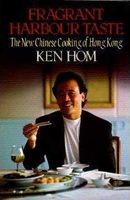Advertisement
Appetizers and Dim Sum
By Ken Hom
Published 1989

Dim sum are light snacks designed ‘to touch the heart’, as the literal translation of the Chinese written characters proclaims. That they touch the heart by way of the palate and stomach is deliciously appropriate. Dim sum has been a significant category of the Cantonese cuisine for one thousand years. Throughout Hong Kong today, there are restaurants that specialize in dim sum, offering a great variety of savoury, spicy, and sweet dishes from early morning to late afternoon. Such speciality restaurants are like Western cafes, tearooms and bistros. There is an informality about them that is conducive to relaxation. They are places of animated and often noisy conversation, where friends and colleagues meet to gossip and to transact business. Dim sum is usually served from steaming bamboo baskets set on carts that are pushed slowly past the diners’ tables. Whenever you wish to select an offering you simply nod or point to it and it is served up. One typically samples at least two to four dishes. Tea is drunk throughout; indeed, this repast is sometimes referred to in Hong Kong as yum char, Cantonese for ‘drink tea meal’. As with all Chinese cuisine, dim sum dishes allow for the introduction of new ingredients and techniques. The recipes here reflect Hong Kong’s subtle innovations and variations on the traditional themes.

